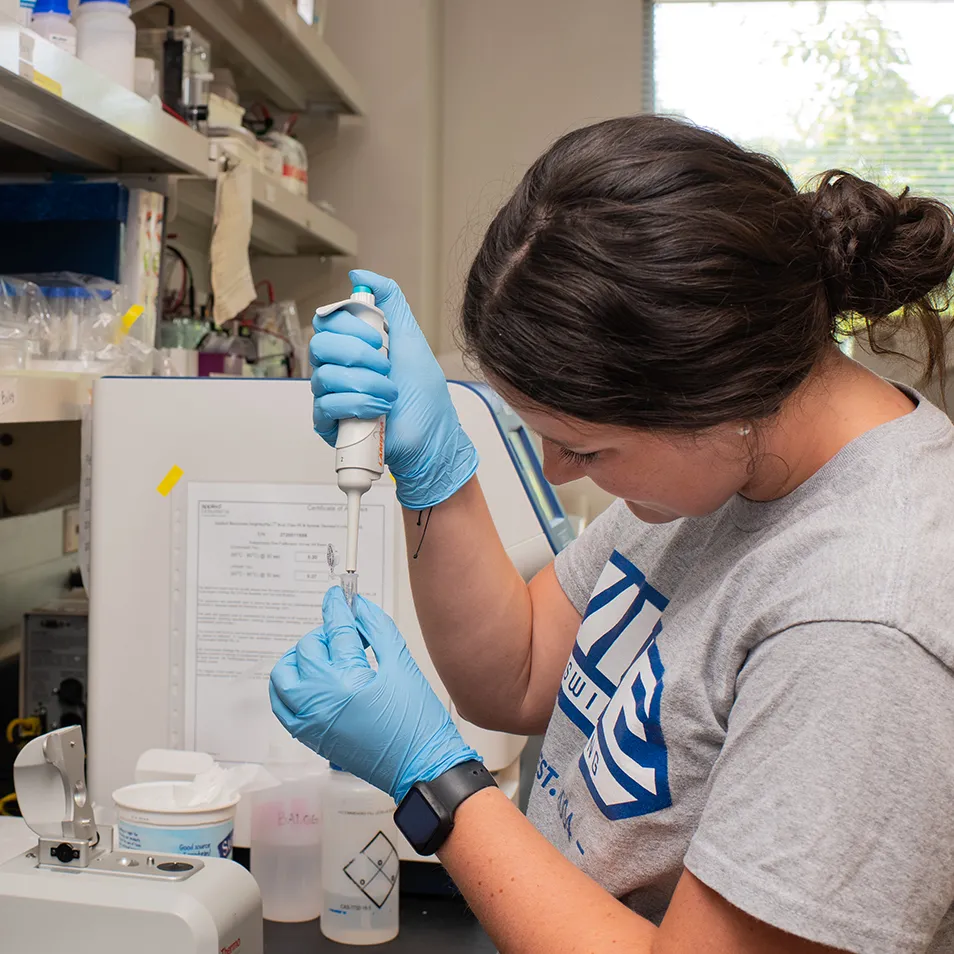Student Experiences: Ono Lab

Taylor Gibson, M.S. ’23
The project I am working on for my master’s thesis is determining the composition of the diet of gray seals and harbor seals through DNA analysis of their intestinal contents/feces, as well as comparing the two species’ diets. I am currently in the DNA-extraction process with my samples, which will lead to PCR testing [polymerase chain reaction testing, the same technique used to identify DNA in COVID strains] and DNA sequencing in future weeks. The sequencing will provide insight on any vertebrate and DNA detected within the samples, which will then be used to determine the composition of the seals’ diets.
This research is part of a larger study with Frederick Wenzel of Northeast Fisheries Science Center in Woods Hole, Massachusetts [part of NOAA Fisheries, a governmental agency responsible for ocean resource stewardship], who will be running similar analyses on the stomach and blubber of the same seals and will then compare the results of all three analyses (intestine, stomach, and blubber) to piece together a comprehensive diet of the two species and see if they overlap.
I am a first-year 4+1 graduate student at UNE. During my freshman and sophomore years as an undergraduate student here, I worked as a lab assistant in one of the research labs. This sparked my interest in research and opened my eyes to the idea of completing my master’s through UNE. It’s been a smooth transition from undergraduate to graduate work.

Dominique Mellone, M.S. ’22
My research is focused on characterizing stress levels in gray seals—both wild seals from multiple islands off the coast of Cape Cod and captive seals from the National Zoo in Washington, D.C. I am performing FGMA (fecal glucocorticoid metabolite analysis) to quantify levels of glucocorticoids, or stress hormones, from fecal samples of both the wild and captive seals. This analysis has never been performed on gray seals, so my thesis is a novel study.
The fecal samples from the wild seals were taken during fall, the period in which white sharks are heavily prevalent along the coast of New England, especially Cape Cod. I hope my data indicate trends that show wild seals have a higher quantity of stress hormones than the captive seals, possibly due to intense predation pressure from white sharks.
I also went to UNE for my bachelor’s degree. This is where I first got experience working in the marine lab with seals. A lot of my undergraduate research was focused on diet analysis.
